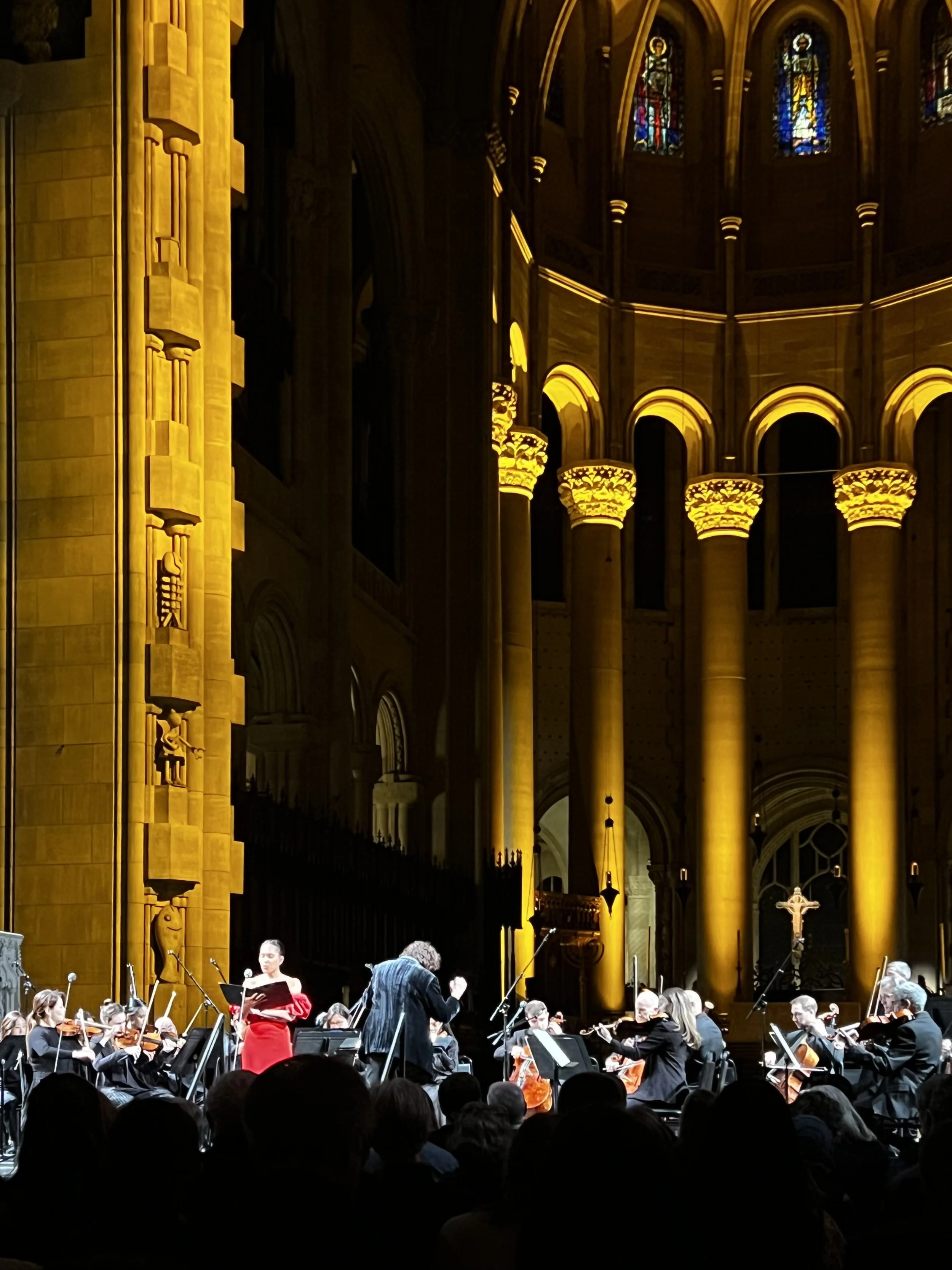by Maria Danova, Independent Scholar
“Music gives access to number in a particular way, by making it audible.”
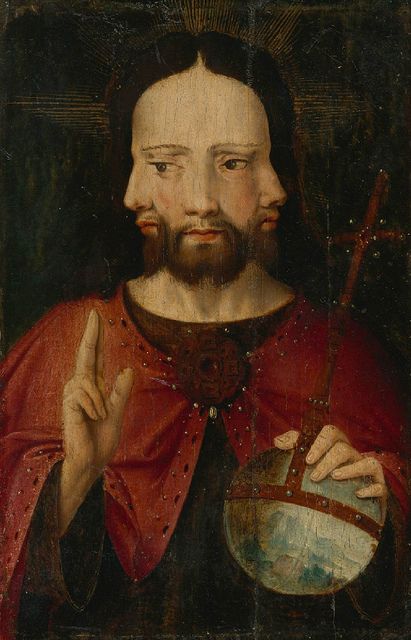
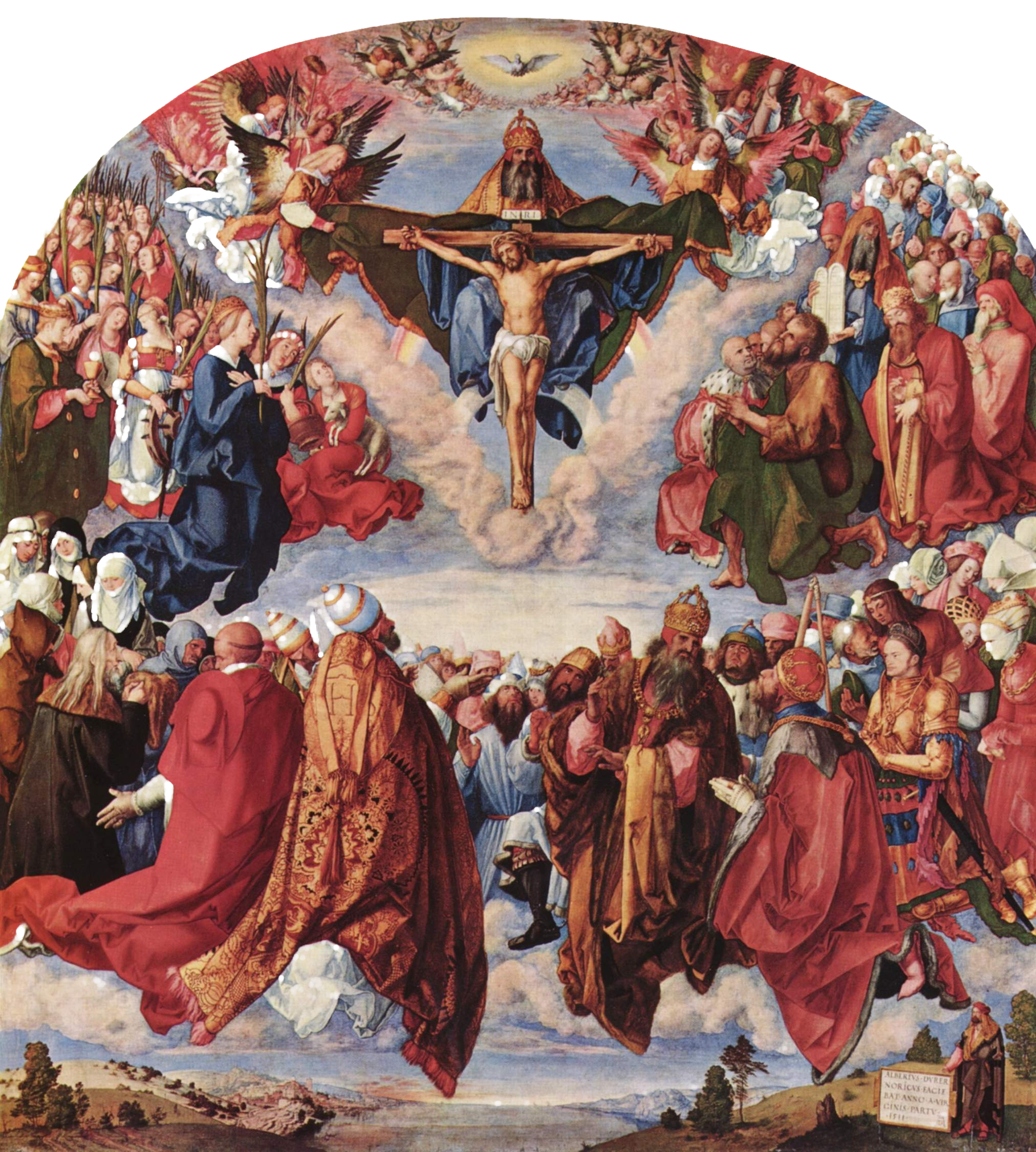
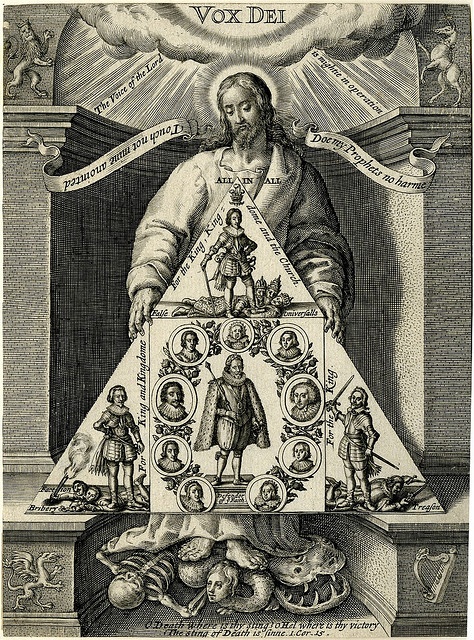
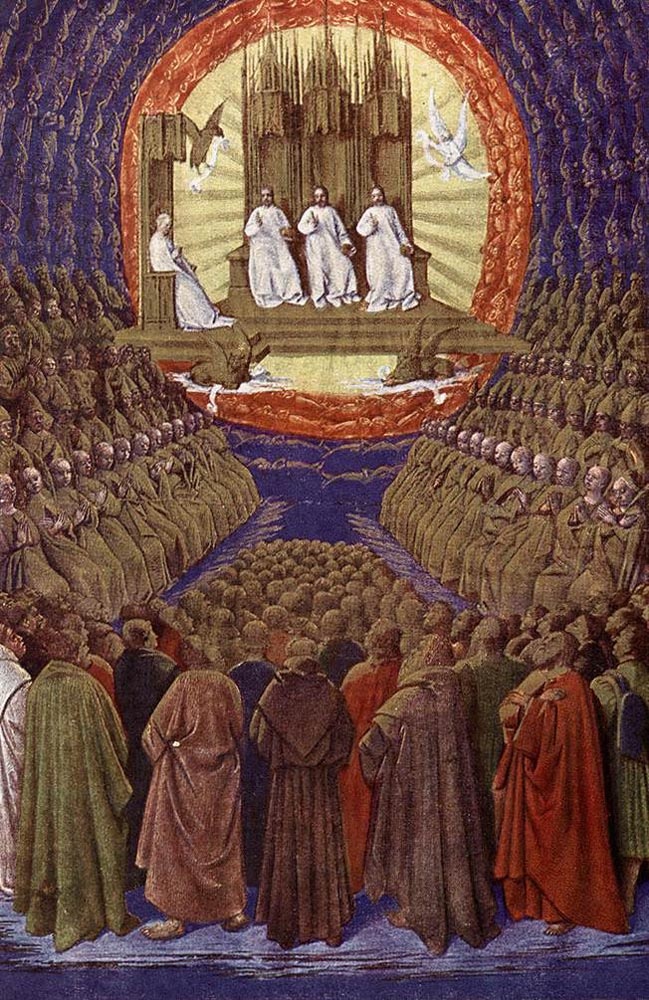
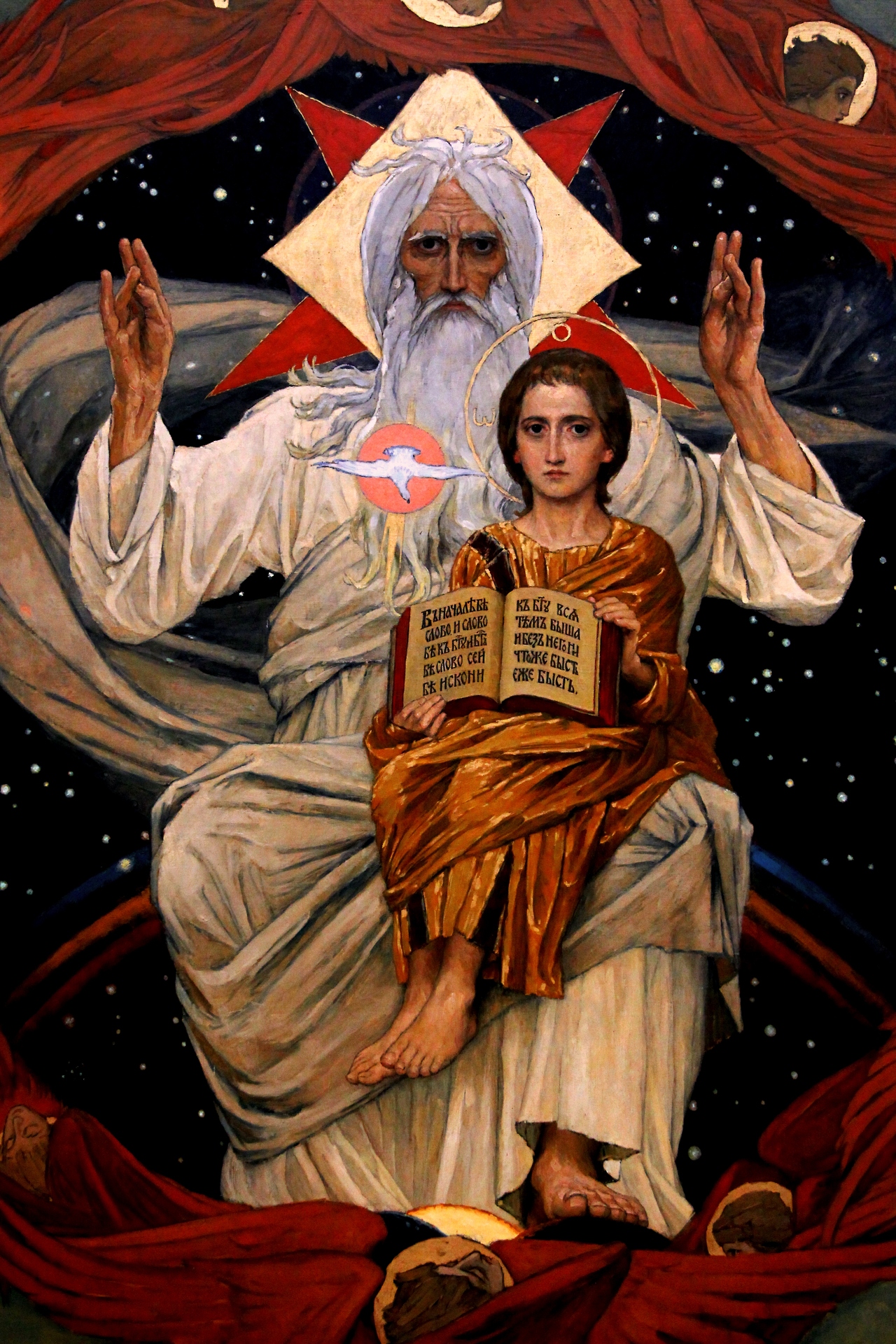


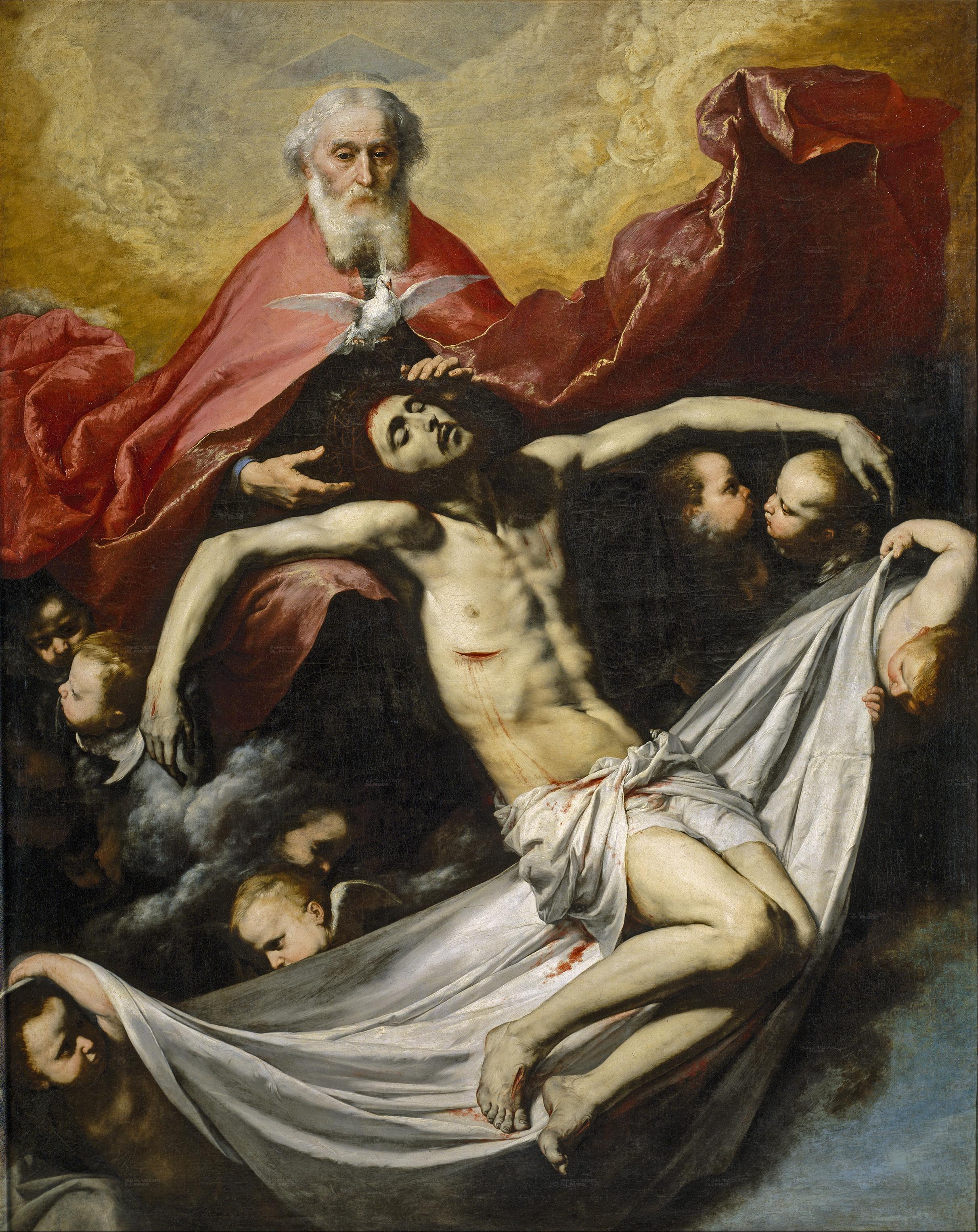
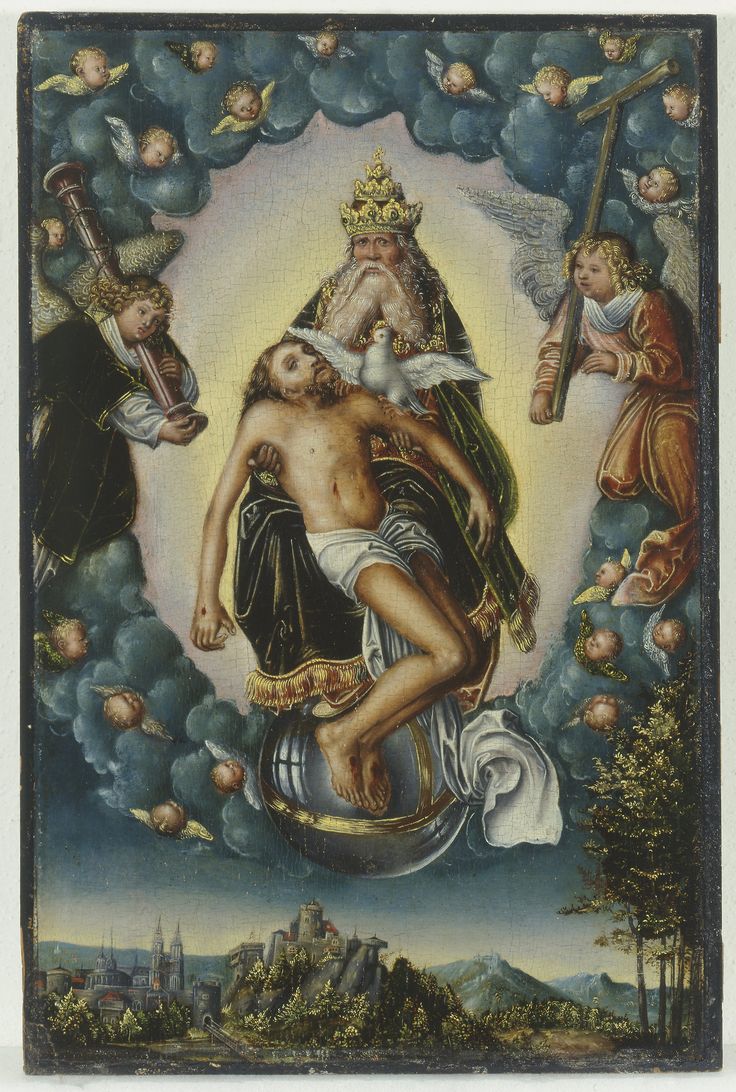
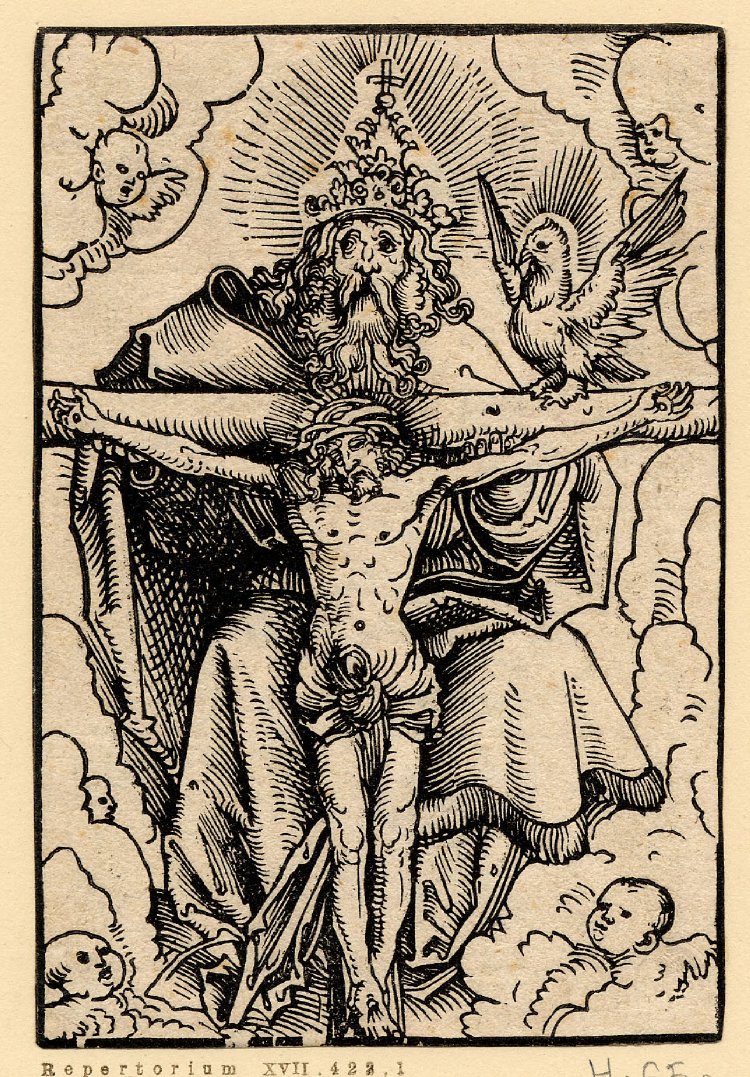
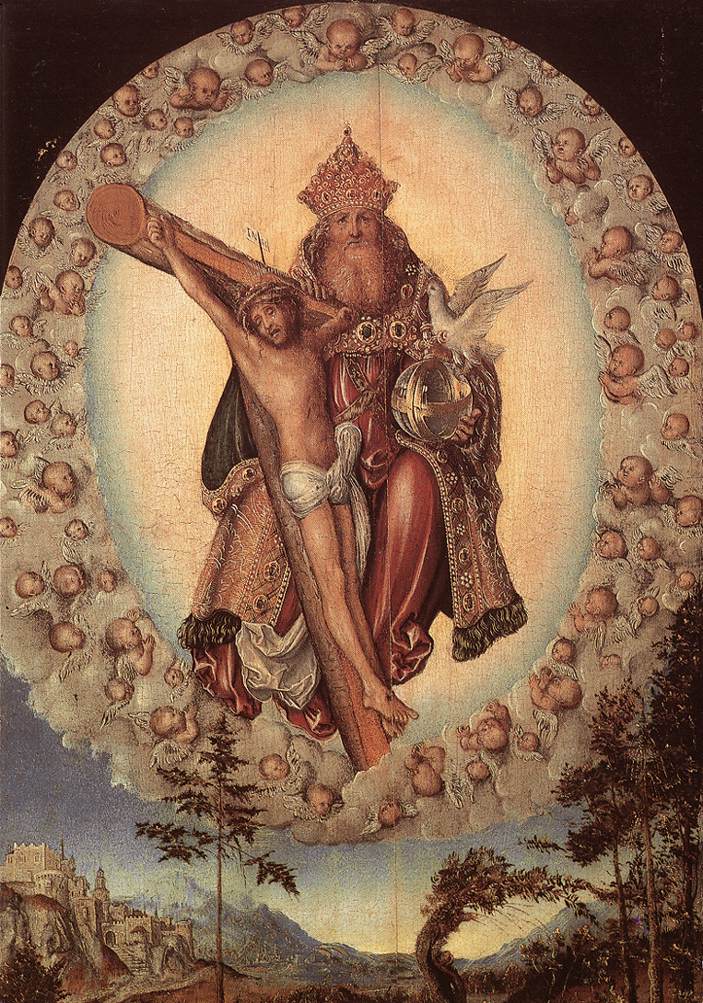
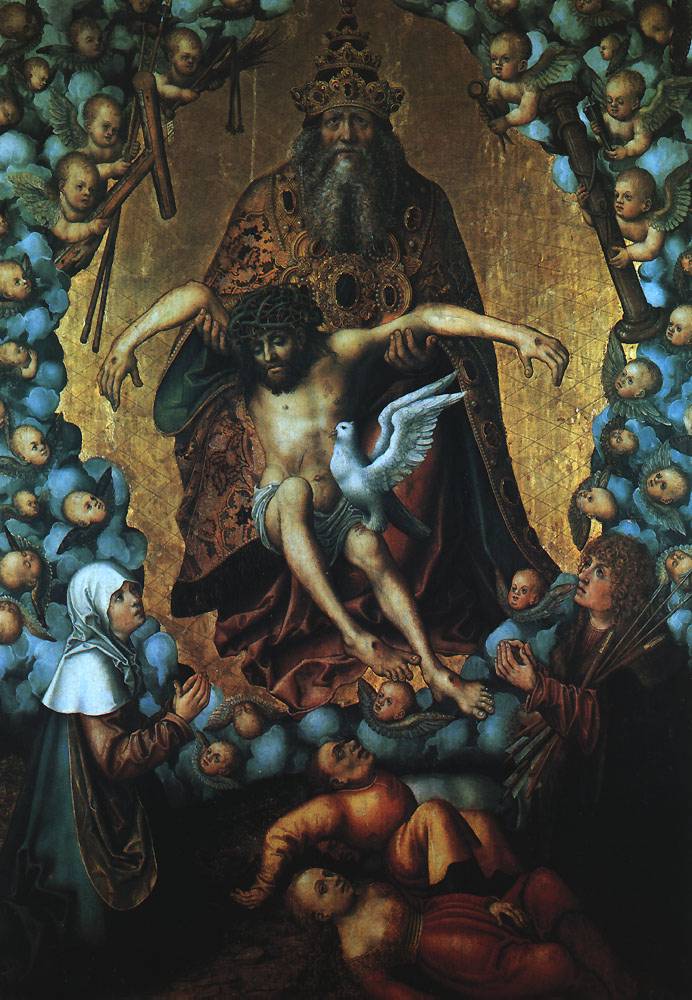
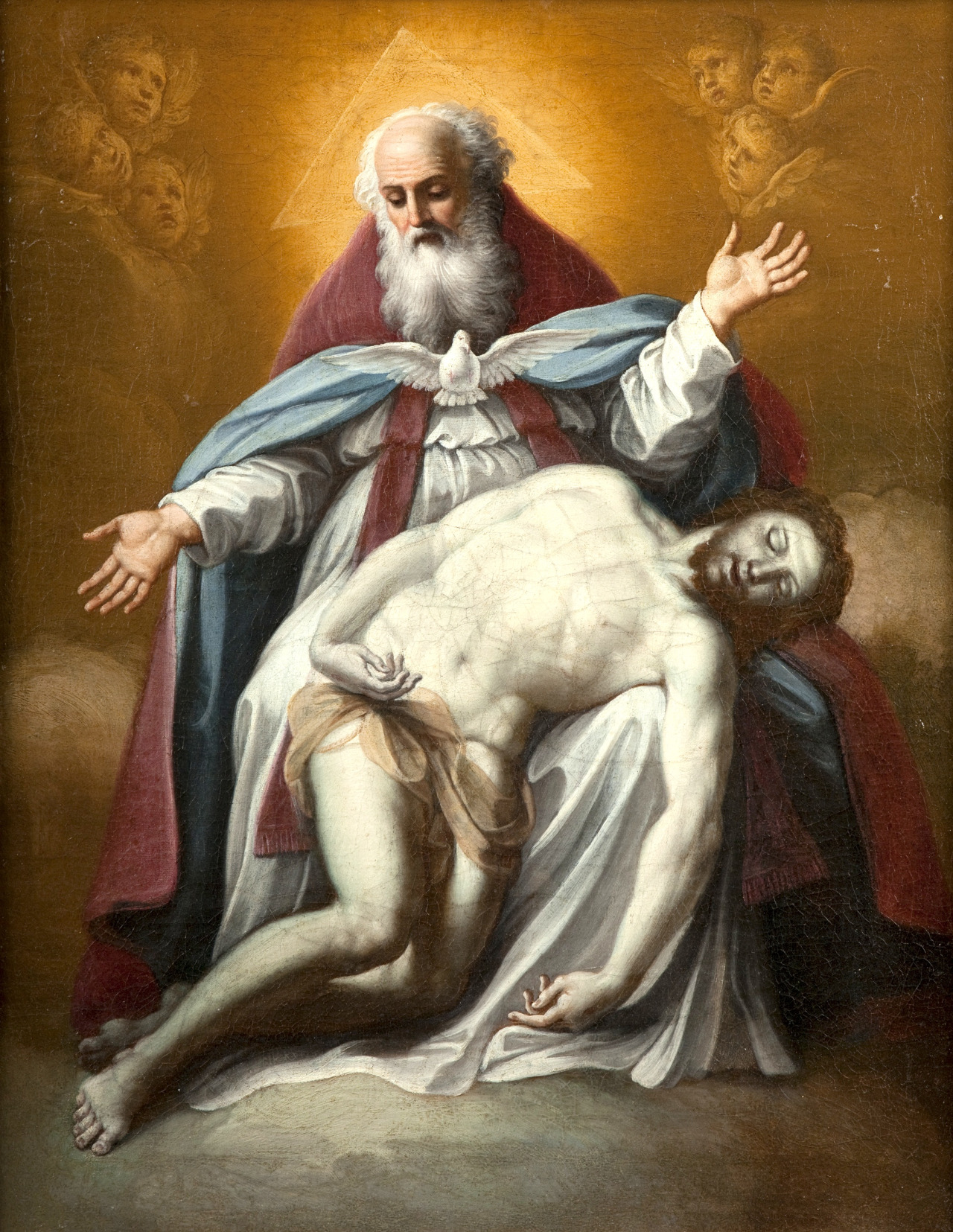
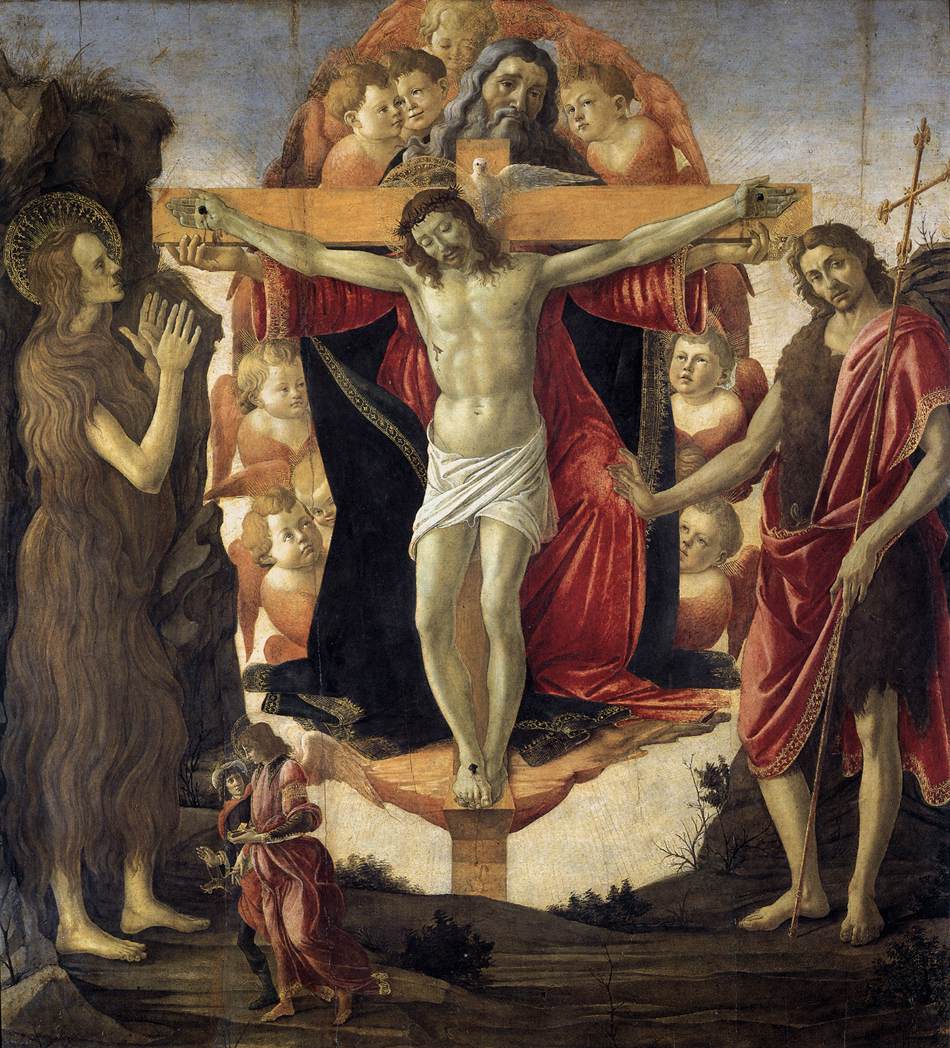
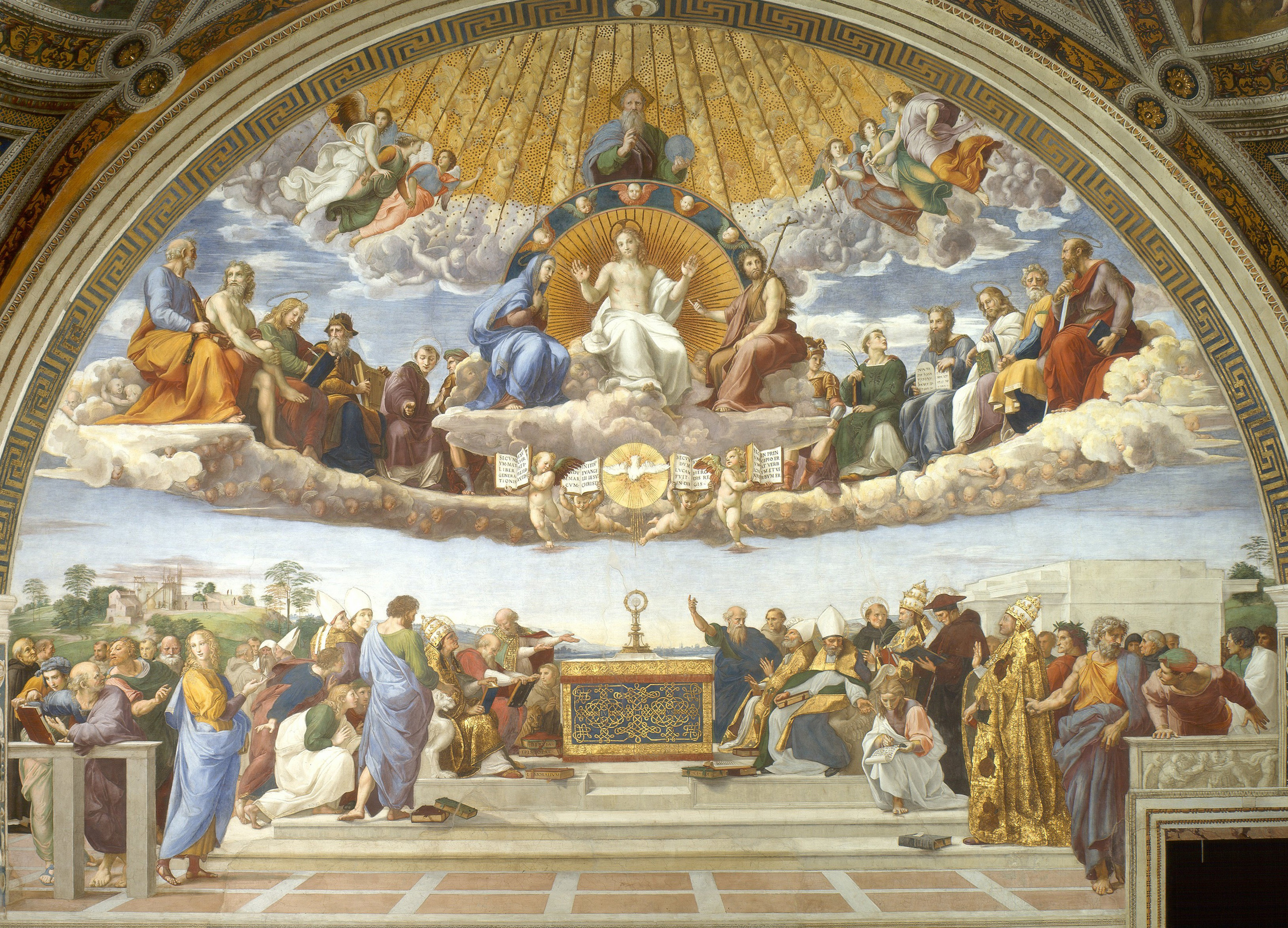
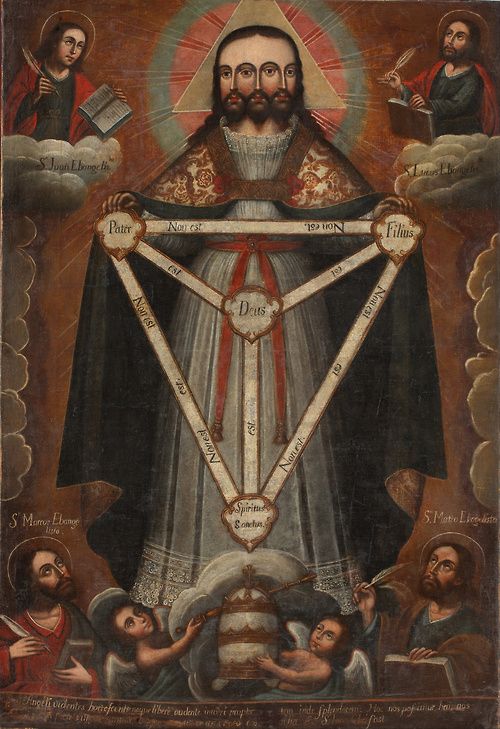
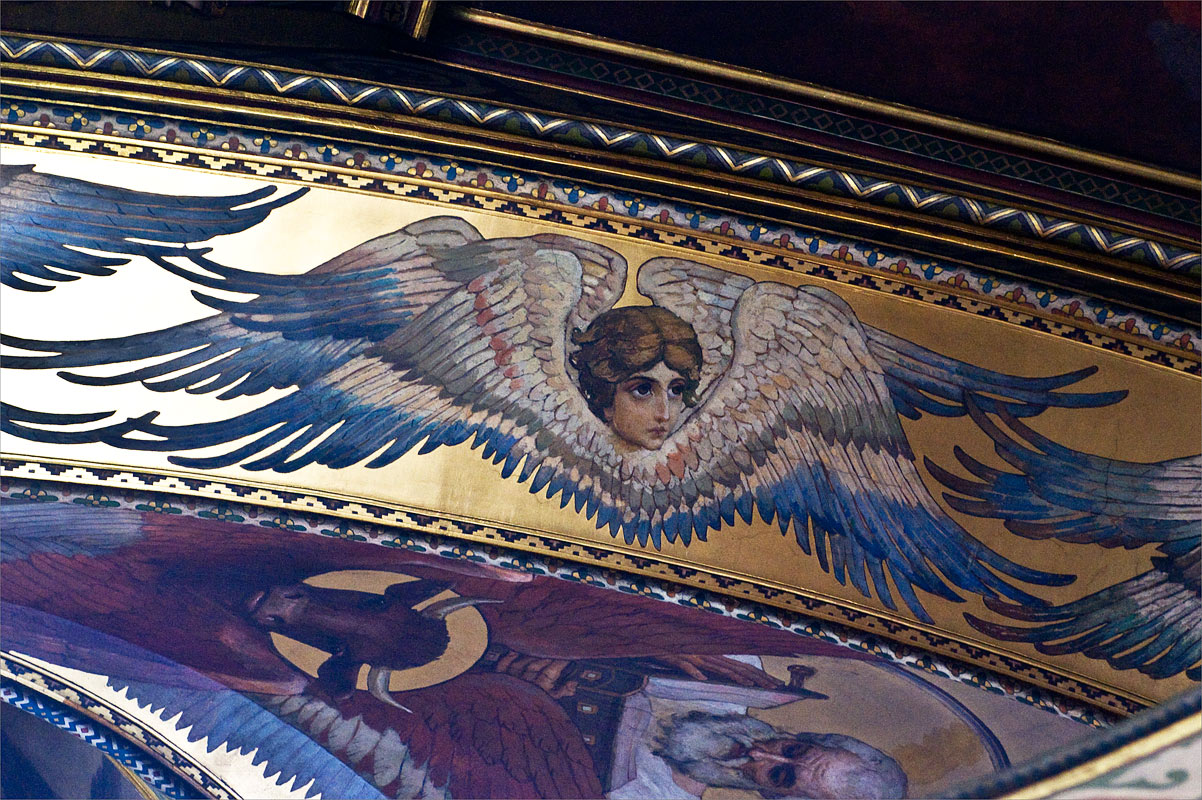
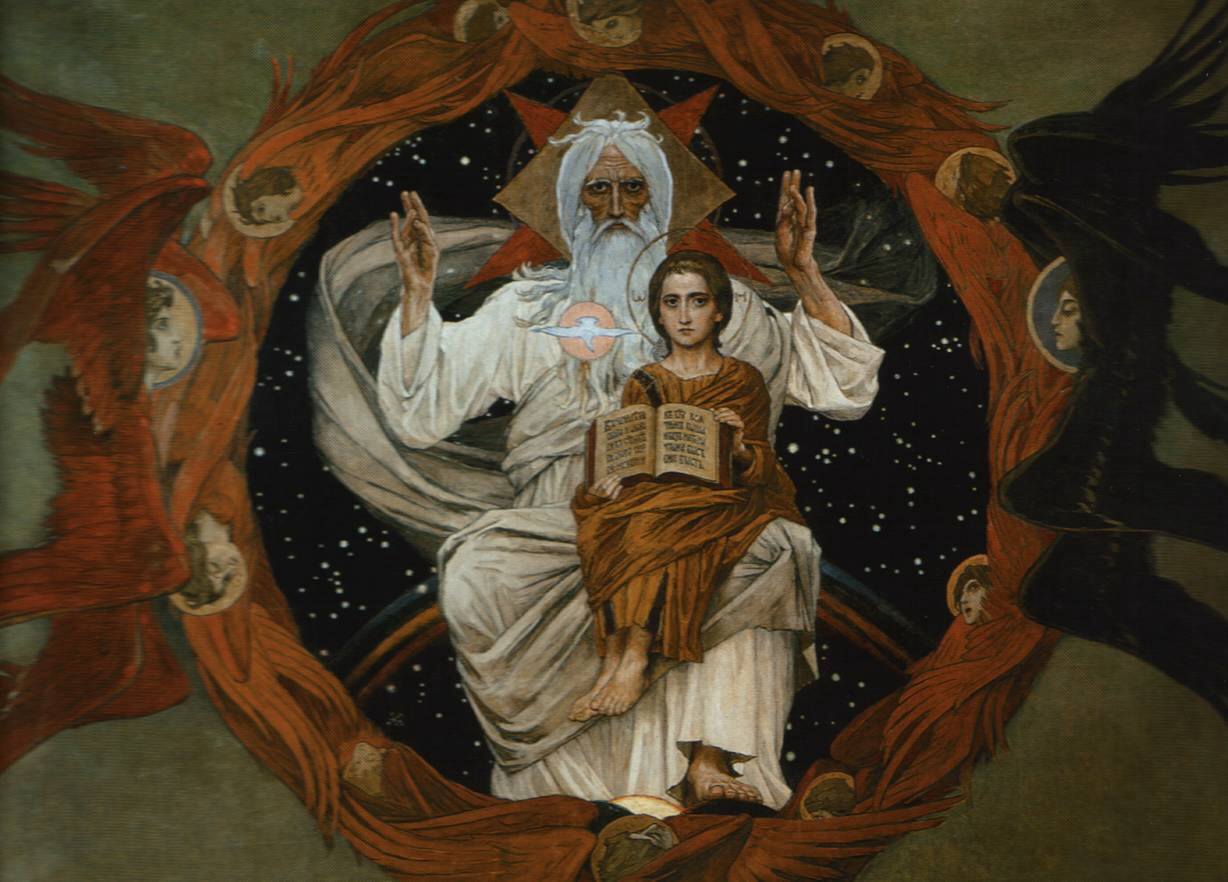
In the Pythagorean doctrine, the notions of Monad—the sacred unity of One from which everything generated—and Tetractys, as the consummation of the creation process and the underlying pattern of the whole being, were especially important. It is acknowledged by many religions and esoteric doctrines that the world derived from a Divine Unity, as evidenced by multiple myths and cosmogonic stories across different cultures. Christianity, as well as Kabbalah and many other currents of mystical thought, claims that the world was created by Word, the first creative Divine Sound, as the matter responded to the will of the Creator:
And God said, “Let there be light,” and there was light. (Genesis 1:3)
As Melanie Braun writes in her text on vowel incantations, “ancient mysteries teach that in the beginning, Creative Force 'spoke,' and this sound, this vibration, this Word, became the unit of all existence.” [1]
The Monad incarnate: Pieter de Grebber, God Inviting Christ to Sit on the Throne at His Right Hand, 1645 (detail), Museum Catharijneconvent Utrecht.
In the Hermetic Emerald Tablet (in Sir Isaac Newton’s translation, c. 1680) it is written: "And as all things have been & arose from one by the mediation of one: so all things have their birth from this one thing by adaptation".
Similarly, the verse 1:7 of the Kabbalistic book of formation (or creation), Sefer Yetzirah, reads:
Ten Sefirot of Nothingness
Their end is imbedded in their beginning
and their beginning is their end
like a flame in a burning coal
For the Master is singular
He has no second
And before One, what do you count? [2]
Pythagoras meant that the whole universe generated from the divine Monad, and he ascribed divine qualities to the numbers immediately following it: 2, 3, 4 and their sum (1+2+3+4), 10. To him, numbers were living forces, almost creatures, which also coincides with the Kabbalistic views ascribing active essences to letters and numbers.
Geometrical qualities of 1, 2, 3, and 4.
These initial numbers or rather, basic principles of the world, coincided with Point (1), Line (2), Figure (3), and Solid (4), thus encompassing all the three dimensions of the physical world, plus a transcendental one (10):
- the monad, or active principle of nature = impersonal God-principle = Eyn-Sof, the absolute ineffable void, chaos, but also the radiant point of Divine Light);
- the duad, or passive principle = matter (Line);
- the triad, or world emanating from their union = the world of phenomena, uniting the monad and duad (Surface);
- the quaterniad, or intellectual science = a form of perfection, the principle of law and order (Solid).
Finally, the Divine Tetractys comes as the sum of these four, being the ultimate symbol of perfection. The very word is equivalent in its deeper meaning to the sacred Judaic Tetragrammaton (the ineffable name of God) YHWH (יהוה). Pythagorean initiates even swore by the tetractys to preserve secrecy and fidelity: so sacred was this Figure, and simultaneously Divine Principle, to them.
This universal formula truly applies to everything in the perceivable world, and music is of course no exception. As Anthony Westbrook writes, “unity creates by looking at itself; creation occurs entirely between one and two; all tones in harmonic series occur between the first and second partials.” [3]
Illustration of a harmonic series, i.e. a series of overtones, on the note C, from Leonard Bernstein’s 1st lecture from theseries “The Unanswered Question: Six Lectures on Music given at Harvard,” 1973.
Click here to watch the full video of Bernstein’s lecture.
Interestingly, the number of Sefirot in the Kabbalistic tree, which encompasses absolutely everything and represents the structure of the universe as designed by God, is also ten. As Mackey writes: “in the Mysteries introduced by Pythagoras into Greece we again find the ineffable name of the Hebrews, obtained doubtless by the Samian Sage during his visit to Babylon. The symbol adopted by him to express it was, however, somewhat different, being ten points distributed in the form of a triangle, each side containing four points...” [4]
Here we see the pythagorean Tetractys.
Here we see the Tetragrammaton [5] in a triangle, adding up to the number 72, considered in esoteric Jewish tradition to numerically represent God [6].
Albert Pike in his Morals and Dogma also traces the connection of the Pythagorean tetractys to Kabbalah and their common source, Egyptian arcane knowledge: the Tetractys, a figure borrowed by Pythagoras “and the Hebrew priests alike from the Egyptian sacred science, [which] leads you not only to the study of the Pythagorean philosophy as to numbers, but also to the Kabbalah, and will aid you in discovering the True Word, and understanding what was meant by ‘The Music of the Spheres.’” [7]
From Pike, Morals and Dogma. The Tetractys with Hebrew attributions (The Ineffable Name).
Such similarities in Pythagoreanism, Kabbalah and Egyptian sacred knowledge should not surprise us, as Pythagoras combined pieces of various systems of sacred knowledge that he learned in his travels, apparently obtaining them through various initiations. As Albert G. Mackey writes in his book on Freemasonry: “In Egypt he [Pythagoras] was initiated in the Mysteries of that country by the priests. He also repaired to Babylon, where he became acquainted with the mystical learning of the Chaldeans, and had, no doubt, much communication with the Israelitish captives who had been exiled from Jerusalem, and were then dwelling in Babylon. On his return to Europe he established a school, which in its organization, as well as its doctrines, bore considerable resemblance to Speculative Masonry; for which reason he has been claimed as ‘an ancient friend and brother’ by the modern Freemasons.” [8]
David Roberts, Egyptian Landscape with a Distant View of the Pyramids, 1862, Berger Collection at Denver Art Museum.
The researcher George G.M. James even went so far as to suggest that the whole Greek philosophy was no more than stolen Egyptian philosophy. In his 1954 work “Stolen Legacy” he writes that not only Pythagoras, but also many “Ionian students after obtaining their education from the Egyptian priests returned to their native land, while some of them migrated to different parts of Italy, where they established themselves.” They studied at mystery centers, almost like at Universities, where divine and scientific knowledge was accumulated and transmitted: “Egypt was the center of the body of ancient wisdom, and knowledge, religious, philosophical and scientific, spread to other lands through student Initiates.”
Music, James writes, was considered within the Egyptian system of knowledge as “the living practice of philosophy, i.e. the adjustment of human life into harmony with God, until the personal soul became identified with God, when it would hear and participate in the music of the spheres. It was therapeutic, and was used by the Egyptian priests in the cure of diseases.” [9] Reading this account of their ideas and rituals, one cannot help but notice striking similarities with those that Pythagoras proclaimed and practiced.
Pythagorean doctrine can in fact be considered a creative combination of these pieces of sacred knowledge coming from the Egyptian, the Babylonian, and the Jewish traditions. Although no final statement can be made on this account, since there are not many documented testimonies left to prove this, many researchers cling to this version, and to us, it also seems intuitively right.
Variations on the Pythagorean tetractys, with the four baic elements (Fire, Air, Water, Earth) in Robert Fludd’s (1574–1637) treatises.
The Egyptian origin of the Pythagorean triangle and the so-called 47th problem of Euclid: Osiris (Ausar, 3, male: origin), Isis (Auset, 4, female: recipient), Horus (5, the perfected result). This triangle is the symbol of the Creative Logos. From Higgins, The Beginning of Masonry : 32.
But perhaps more famous in the context of Pythagoras is another triangle composed of the sides measured by 3, 4, and 5, which we all know under the name “Pythagorean triangle.” This figure was also reflected in the system of initiation and learning that he conceived for his disciples (both male and female: a concept surprisingly modern for is time). The process of learning was divided into three consecutive steps, with philosophy as the pinnacle of this pedagogic triangle, and mathematics (geometry) and music being the necessary two first steps. Thus, philosophy can be viewed as a perfected product of combination of the first two, as the 3-4-5 triangle suggests:
“…the triangle of apprenticeship implies mathematics as the first step. His motto was 'Let no one ignorant of geometry [ageômetrètos] enter'. <…> The second one was music, which he united with astronomy, and finally, there was philosophy. Only having mastered these three sciences… was a disciple admitted to the arcane esoteric wisdom.” [10]
In an article analyzing the esoteric meaning of the Pythagorean triangle, Antonietta Francini quotes Plutarch, who describes and explains the ancient Egyptian meaning of this triangle, whereby the upright side is likened to the male (Osiris), the base to the female (Isis), and the hypotenuse to the result of their union (Horus). Plutarch writes: “Three is the first perfect odd number; four is a square whose side is the even number two; but five is in some ways like to its father, and in some ways like to its mother, being made up of three and two. And panta (all) is a derivative of pente (five), and they speak of counting as ‘numbering by fives.’ Five makes a square of itself.” [11]
This has direct relation to music, for both number 5 (perfect fifth, with the ratio of 3:2) and number 3 (number of the sides in a triangle) are utterly important for musical theory and practice:
“If you divide the string into three <…> you have a perfect fifth, and if you divide that again in three, you have another perfect fifth, and so on, every time you divide or multiply the string by three. This is why the number three was so important to Pythagoras, for it is the generative number of music.” [12]
As we know, three is the number of Graces (Charites, Greek Χαριτες) in Ancient Greek mythology. The list of their “responsibilities” as goddesses unmistakably links them to music and creativity as such: grace, beauty, festivity, adornment, mirth, dance, and song. At the same time, the number of Muses, 9, is derived from 3 by square multiplication. As the prominent specialist on mythology Joseph Campbell wrote, the number 9 is “that of the Muses manifesting in the field of space-time the energy… of the Apollonian mind as mediated through the Graces.”
Apollo as the Supreme Deity not only is the source of these emanations, governed by numerical logic. He also gives the necessary resolution—on the levels of both arithmetic and celestial harmony—and perfection to both of these uneven numbers, 3 and 9, encompassing both principles under the auspices of his Divine Unity, 4 and 10: “In relation to the Graces, Apollo appears as a fourth, and in relation to the Muses, as a tenth.” [13]
Apollo. The Graces and the Muses. Depiction of the bas-relief by Bertel Thorvaldsen, 1811, drawn and engraved by Riepenhausen and Ferdinand Mori, from an album published in Rome, 1811. Source: Heidelberg University Library
The three-headed serpent representing time (Chronos), fragment from the frontispiece of Franchino Gaffurio’s Practica musicae, 1496.
As we can see, the number Three has been viewed since antiquity as a basic creative number for the whole being, and the art of music specifically. In the European tradition, this has been illustrated multiple times, one of the most famous examples being the depiction of the “system” of celestial harmony under the guidance of Apollo, with the three graces, nine muses, seven planets (plus the sphere of fixed stars as the 8th), eight tones, and four elements all engaged in a harmonious interplay, from the treatise Practica Musicae published in 1496 in Milan by the musician and theorist Franchino Gaffurio (Gaffori), friend of Leonardo da Vinci’s who even allegedly painted his portrait. Remarkably, throughout the whole system of celestial harmony there stretches a three-headed serpent representing time, but also possibly implying some deeper mysteries connected with the number three which I hope to explore in detail on a different occasion.
But now, I would like to turn your attention to another illustration, stemming from a later period. It is the frontispiece of book I of the extremely influential treatise Musurgia universalis (Universal Musikmaking, 2 vols., 10 books), published in 1650 by the great Jesuit scholar and magus of the Renaissance era, Athanasius Kircher (1602–1680).
In this image, we see the whole musical universe permeated by the light of the Trinitarian principle—the triangle with an eye, symbolizing God’s omnipresence and omniscience and also personifying the Trinity. For Kircher shared “the medieval idea that music is a reflection of the essential mathematics and proportions inherent in all Creation”, and the Trinity was for him “not only a symbol but a real dogma.” [14]
The triangle of the Deity-Trinity in this allegoric engraving emanates life-giving, inspiring light, tuning the universe to move and sound in a harmonious mode. We can even get a glimpse of the sound of this divine harmony by imagining (or actually singing) the score of the “Canon angelicus 36 vocum, in 9 choros distributos”—a 36-part canon by Romano Micheli, sung by nine four-voiced choirs formed by the angels. In this canon, there is only one word, repeated thrice, forming a sounding triangle, the so called Tersanctus from the prophet Isaiah’s vision of the Lord (Is. 6:1-6):
Sanctus, Sanctus, Sanctus
(Holy, holy, holy is the LORD of hosts; the whole earth is full of his glory!).
On the middle level, we see Musica reigning over the globe of our mundane world, holding the lyre of Apollo (Harmony) and the panpipes (Dionysian, orgiastic element), thus demonstrating the dual principle that lies in the base of the whole creation.
Frontispiece from Liber I of Athanasius Kircher’s Musurgia Universalis, 1650. Engraved by Baronius of Rome after a drawing by John Paul Schor. See also the frontispiece of his Arithmologia (1665) on numerical mysteries.
In the lower left part of the image, we once again encounter the 47th problem of Euclid. Pointing at this sacred triangle, symbolizing the Trinitarian principle of the world on the mystical and mathematical levels (Isis, Osiris, Horus) by one hand, and at the “harmonious blacksmiths” by the other, alluding to the legend of how he discovered musical ratios, the ancient master is giving us a clue: the laws of mathematics and those of music-making are intrinsically related—in fact, they are one.
Frontispiece of Kircher’s Musurgia Universalis, Liber I, fragment. The figure of the triangle underlies the whole complex fabric of music, not only on the level of string division, but also on that of the triads—those chords that best represent the principle of the Divine Trinity.
In Article I of his book The Principles of Theology (1930) William Griffith Thomas, an Anglican cleric and theologian, writes:
The only perfect concord of music is a trinity, consisting of the fundamental note with its third and fifth which proceed from it and from the complete chord, known as the Perfect Triad. From this chord all other harmonies are built, and the moment we add any other note we get what is technically known as a discord, a chord which requires resolution, which leaves the ear unsatisfied, and which must invariably be resolved on to the concord of the Perfect Triad before the musical sentence can be satisfactorily finished. Then, too, there are three instruments of progress: Religion, Science, and Art. And according to recent science the universe is triune, consisting of Ether as invisible substance, Matter as visible fact, and Energy as consisting of the forces of heat, light, sound, and electricity. The rays of light are also threefold. [15]
It should be noted, however, that Griffith’s account of how music functions applies only to the ‘well-tempered’ system of Western (i.e. Christian) music that came about largely due to Andreas Werckmeister (17th c.) and J.S. Bach; in other musical cultures, for example in the East, there is often no need to resolve the sounds or chords into each other, for they all have the same melodic and harmonic value, and there is no strict division of sound material into concord and discord.
Jerónimo Cósida, The Holy Trinity, fresco, c. 1570, Cisterian Monastery of Tulebras, Spain.
But even before the introduction of this new system of musical coordinates that created a strict harmonious grid, composers and theologians had been fascinated by the idea and the sound of triad.
For instance, St Ignatius of Loyola (16th c.), founder of the Order of Jesuits that the great polymath Athanasius Kircher belonged to, once had a vision that let him realize the truly unified nature of the Trinity, both on musical and theological planes. He described it himself, in a contemplative third-person mode, in his autobiography Reminiscences, Section 28:
He used to have great devotion to the Most Holy Trinity, and so used to pray each day to the three persons separately. And as he was also praying to the Most Holy Trinity as such, a thought used to occur to him: how was he making four prayers to the Trinity? But this thought troubled him little or not at all, as something of little importance. And, one day, while praying the office of Our Lady on the steps of the above-mentioned monastery, his understanding began to be raised up, in that he was seeing the Most Holy Trinity in the form of three keys on a keyboard, and this with so many tears and so many sobs that he could not control himself. [16]
The exact words that St. Ignatius uses in Spanish to express this fantastic vision was ‘en figura de tres teclas.’ As the English translator notes: “this is a puzzling and obscure expression, and it may not be appropriate to seek out a precise meaning. The analogy may be with how three individual notes can contribute to a chord.”
Indeed, a precise meaning and visual representation of what the visionary saw that day can scarcely be found. But there remains little doubt that what St. Ignatius wanted to convey was his perception of the Holy Trinity as a triad, sounding together in perfect harmony, but also actively producing divine overtones, thus expressing the concept of ‘motion in motionlessness’ which is often used to describe the ineffable essence of the Trinity.
Peter Paul Rubens, Ignatius has a vision of the Trinity while praying at the Dominican church in Manresa, plate 16 from the pictorial biography of the saint, The Life of St. Ignatius of Loyola, published in 1609, the year of his beatification. Source: www.jesuitinstitute.org
Or, as beautifully formulated by theologian Michael Peppard in his short essay on Ignatius’ unusual vision, St. Ignatius “heard the Trinity as a justly intoned musical triad, a relationship which through its harmony emanated other notes in a procession of audible light.” [17] This perception of sound as light and light as sound recalls the notion of synesthesia which has always been very important to mystics of various tradition as a manifestation of higher states of consciousness. A prominent specialist in Jewish studies, Aryeh Kaplan, calls synesthesia “an important experience in high meditative states, where sound is seen and colors are heard” and then gives an example of the illustrious Rabbi Akiva –the Jewish mystic often credited as the author of the present version of Sefer Yetsirah (Kabbalistic Book of Formation). On the Bible verse “And all the people saw the voices” (Exodus 20:15) Rabbi Akiva, who most likely lived through such experiences himself, elucidated “that they saw the sounds and heard visions, a clear example of synesthesia.” [18] The very possibility of such ecstatic states is yet another proof of the Pythagorean idea that the whole universe is governed by music that permeates all the levels of being. Access to this music can be attained in special elevated states of mind by those who are eager to develop a universal hearing within themselves, or just have it as a talent by virtue of birth, like Pythagoras.
A depiction of “audible light,” or “luminous sound”: The Glorification of the Virgin by Geertgen tot Sint Jans, Museum Boijmans van Beuningen.
Click here to listen to the musical instruments depicted in the painting.
Pondering on Loyola’s vision, Peppard further describes his own experience of sacred choral singing. According to him, it is possible for anyone with well-developed musical hearing to discern the angelic overtones produced by three male voices singing a triad together in a temple, with its carefully planned acoustic:
I would say that I had not experienced the full beauty of choral music – and the mysteriousness of audible waves—until the first time I stood rapt by the faint sounds that floated above a perfectly tuned triad of men’s voices. High flute-like tones were undeniably audible, although none of us were (intentionally) singing them. I knew that the overtones were resonating back to me off the high walls, but it seemed also as if they were immediately present or even inside of my head. Overtones sound as if they happen in the midst of the group; they are often felt more than they are heard. [19]
One of the most magnificent and elevating pieces in musical history written for three male voices and praising the Trinity is Claudio Monteverdi’s (1567–1643) Duo Seraphim from the Vespers of the Holy Virgin, 1610. Its performance by three wonderful young singers gives us a perfect opportunity to try to discern the angelic overtones described above:
Live performance by Aaron Sheehan, Zachary Wilder, Matthew Anderson with Hank Heijink (theorbo), Daniel Swenberg (theorbo), and Avi Stein (chamber organ) for the Green Mountain Project on January 3, 2013 at the Church of St. Mary the Virgin, New York City.
Latin text:
Duo seraphim clamabant alter ad alterum:
Sanctus Dominus Deus Sabaoth.
Plena est omnis terra gloria ejus.
Tres sunt, qui testimonium dant in coelo:
Pater, Verbum et Spiritus Sanctus:
et hi tres unum sunt.
Sanctus Dominus Deus Sabaoth.
Plena est omnis terra gloria ejus.
English translation :
Two seraphim cried to one another:
Holy is the Lord God of Sabaoth.
The whole earth is full of his glory.
There are three who bear witness in heaven:
the Father, the Word, and the Holy Spirit:
and these three are one.
Holy is the Lord God of Sabaoth.
The whole earth is full of his glory.
(Source)
At first we here only two voices, as if vocally portraying the seraphim flying close to God’s throne, as they “cry to one another” (as in Isaiah’s vision of God: Is. 6:1-3 ff.) and sing their praise to the Supreme Lord: Sanctus Dominus Deus Sabaoth. As opposed to the original Bible text where this phrase contains the Tresanctus: ...et clamabant alter ad alterum et dicebant sanctus sanctus sanctus Dominus exercituum plena est omnis terra gloria eius (Biblia Sacra Vulgata), in Monteverdi’s piece the Sanctus is only sung once.
Victor Vasnetsov (1848–1926), Lord Sabaoth, fresco at the Vladimir Cathedral in Kyiv
The phrase‘Holy, Holy, Holy is the Lord God of Sabaoth’ from Isaiah 6:3 in Hebrew (Westminster Leningrad Codex): Kadosh Kadosh Kadosh Adonai Tz’vaot (written graphically as YHWH, the ineffable name of God). See Kedushah.
But this “reduction” from three to one is more than made up for by the incredible splendor that begins from the second verse, where the two are joined by the third voice, and each of them magically transforms into an ethereal personification of The Father, The Word, and the Holy Spirit. The singers transmit the dynamic interchange of energies occurring within the Trinity, only to unite in a breathtaking unison, supported by an organ punctum:
et hi tres unum sunt – and these three are one
Whence the words “et hi tres” are sung by the three voices in an F major triad, on the words “unum sunt” (are one), containing the calm, solemn, meditative vowel ‘u’, they unite into perfect unison on the note G, as shown visually in the score excerpt below:
From Chiara Bertoglio’s article “A Perfect Chord: Trinity in Music, Music in the Trinity”. [20]
In this 17th century’s audible embodiment of the principle of Trinity, which is simultaneously three and one (triune), we find a perfect spatio-temporal illustration of the Trinitarian mystery. Music seems to be the best means to convey the mystical dynamic interrelations occurring between the Father, the Son, and the Holy Ghost. No wonder that already the early church fathers attributed such an immense importance to the living human voice in praising the Lord. For voice is, as it were, an external emanation of our soul’s vibration, and, if used correctly, it can work wonders in harmonizing the world around us. [21]
Through monodic Christian singing, it is possible to mystically communicate with Trinitarian life; such singing “unifies and creates, both in image and in act, a concord, which is apparent in sounds but is generated in souls.” [22] Such were also the views of the illustrious female Christian visionary and composer St. Hildegard of Bingen (1098–1179) for whom the highest expression of human praise of the Creation was harmonious music, uniting in the act of singing the Heavens and the Earth, the Above and the Below. Let us listen to her hymn (antiphon) in praise of the Trinity, Laus Trinitati, from the collection Voice of the Blood:
Hildegard of Bingen, Laus Trinitati (Praise to the Trinity), performed by Letizia Butterin, 2014, Church of the Trinity, Verona, Italy.
Latin text:
Laus Trinitati, que sonus et vita
ac creatrix omnium in vita ipsorum est,
et que laus angelice turbe
et mirus splendor archanorum,
que hominibus ignota sunt, est,
et que in omnibus vita est.
English translation:
Praise to the Trinity—the sound and life
and creativity of all within their life,
the praise of the angelic host
and wondrous, brilliant splendor hid,
unknown to human minds, it is,
and life within all things.
Note that the word vita (life) is repeated thrice, emphasizing the life-giving and life-sustaining nature of the Trinity being praised in this hymn. An expert on Hildegard’s oeuvre, Nathaniel M. Campbell, explains the musical meaning of this repetition:
The cascade of descending notes on vita at the end of the first line (line 2 in the transcription) is redoubled in its third appearance in the final line, which carries the longest melisma of any syllable in the piece and spans every note save one of the antiphon’s complete range. [23]
Hildegard von Bingen, Second Vision of the Trinity, Scivias Codex: Book II, 1165 CE. Wiesbaden, Landesbibliothek, source
To Hildegard, this vita is not specifically attached to any of the persons of the Holy Trinity: they all contain this ineffable life-force, streaming abundantly into our minds and onto our existence. In the same way, in various works she associates sound with all the three Trinitarian aspects: in her book of mystical revelations, Scivias, the word’s sound (sonus) signifies the Father; in the hymn O ignee Spiritus, sound is connected to the Holy Spirit, and in her Liber Divinorum Operum, the term sonus often signifies the Son as the sound of the divine Word. [24] Thus, to Hildegard, the two concepts, vita and sonus, appear as intrinsically connected, permeating all levels of being—and both streaming from all the three persons of the creative Trinity.
Another great luminary of the church, St. Augustine of Hippo (354-430) who lived centuries before St. Hildegard, called the Trinity “the source of all things, and the most perfect beauty, and wholly blissful delight.” [25]
Besides his other well-known merits, St. Augustine also wrote a six-book treatise De musica (387–391), where he discusses music as one of the liberal arts, emphasizing its ability to affect the human soul and, thus, human morals and behavior. To him, “recognition of the soul’s ability to judge according to harmonic principles is propaedeutic [instructive] to reflection on the soul’s ability to turn towards or away from God, and thus to be also rightly or wrongly ordered towards the creation.” [26] Moreover, he perceived musical composition as an act of participation in the Father’s creative activity, responding to the generative love of the life-giving Trinity.
These ideas, having their source in the depths of ancient mystical traditions, survived throughout different cultures up to the present day. Not mentioning the abundant Western Christian tradition which would be more fitting to discuss separately, I would like to quote two interesting medieval Jewish sources reflecting the same ideas. The first one is the Medieval Hebrew poet, scholar, physician and kabbalist Isaac ben Solomon ibn Abi Sahula (b. 1244) from Castile who claimed that “by means of the melodic song, both vocal and instrumental, the soul is awakened and the Holy Spirit shines within it and it is elevated, understanding things far more sublime that it had understood beforehand.” [27]
Another prominent Jewish thinker from the same period and region, the Neoplatonist Isaac ibn Latif (c. 1210-1280, Toledo), uses the exact same words as St. Augustine: “The science of music is a propaedeutic one, leading to improvement of the psychological disposition as well as to understanding of some of the higher intellectual principles.” [28]
Angelic Choir (c. 1180). Hildegard of Bingen's illumination from Liber Scivias, Lucca, Biblioteca Statale.
One of the composers of our times who at one critical time of his life directly used music and sound to improve his “psychological disposition” was the mysterious musical magus of the 20th century, the Italian count Giacinto Scelsi (1905–1988) whose 110th anniversary we are celebrating this year. It would not be a stretch to claim that he shared the belief of the composers of the past that the value of their work lies “primarily in its generative intention and in its intrinsic correspondence with the mystery it aimed at expressing,” [29] be it the mystery of Unity (monody, unison) or Trinity, although they are on some level one and the same.
The sacred monadic unity, hinting at the perfect, ineffable and eternal nature of the Divinity, is expressed not only in Scelsi’s music, but even in his mystical signature, possibly alluding to the ancient Egyptian symbol of Infinity:
Signature of Giacinto Scelsi, reminiscent of Shen, Egyptian symbol of Infinity.
Scelsi is known and admired especially for his explorations of the immense powers and possibilities of the unison, i.e. a single note, reflecting, among other implications, the monadic principle in the creation, and monody—a chant of one voice as opposed to choral singing.
Born before the First World War, Scelsi suffered a mental breakdown after World War II. Apparently his gentle soul could not handle all the physical and spiritual atrocities of this massacre; in addition, as he himself claimed, he was made ill by the 12-tone music he had been involved with before, and needed a period of musical asceticism and purification. So he stopped composing for a few years altogether and resorted to the powerful remedy of sound vibrations.
Perhaps trying to reclaim the purity of the first days of creation, he spent day after day playing a single note on the piano, listening to its fading overtones. As the musicologist Alex Ross writes in his essay on Scelsi, “the casual observer might have thought that he had gone mad. He was, in fact, finding his path.” [30]
In 1952, he came out of this auditory isolation, inspired as ever. By 1959, he was able to compose a truly groundbreaking work for a chamber orchestra of 25 musicians, Four Pieces on a Single Note (Quattro pezzi su una nota sola), where each of the pieces centers on a certain pitch: F, B, A flat, and A.
Some ten years later, in 1970, he changed his musical path once again to plunge back into the divine simplicity of tonality. In the piece Three Latin Prayers (Ave Maria, Pater Noster, Alleluia; 1970) Scelsi “is re-asserting his love for tonality, as well as returning to traditional Latin lyrics.” [31]
Odd Nerdrum, Three Singers, 1984, Odd Nerdrum Online Museum
This composition is interesting to us in and of itself, due to its triple composition; but even more fascinating in the Trinitarian sense is the rendition of this piece made by the Voxnova Ensemble. Choosing to distribute the melody between three male voices singing in unison (Nicholas Isherwood/bass, Julian Pike/tenor, Pascal Sausy/baritone), the performers add a completely new spiritual dimension to this seemingly plain, but highly concentrated, even “condensed” music. In musical praise of the ineffable mystery, the singers, tuning horizontally to each other’s voices and spirits and vertically to the divine harmony, can mystically approach that supreme Triad and bring its auditory emanation to our hearing.
(the above musical excerpts are from the CD Voxnova Ensemble. Scelsi, Byzantium, The Alchemists)
*
Now we have heard three musical pieces from entirely different ages and contexts that allow us to approach the Sancta Sanctorum of the Trinitarian mystery, each from a specific angle. Combined, these three views are able to create a “tridimensional” image of the Trinity in our minds, in all its inexplicable magnificent glory—in a similar way as Olivier Messiaen creates a living image of Christ in his Twenty Gazes upon the Child Jesus. But this is of course only the peak of the enormous iceberg, or rather, the Holy Mountain which is the Trinity, and there’s much more to this mystery than the human mind can ever grasp.
In the next piece, our translation of the text “The Secret Codes of Bach” by the Russian musicologist Alexander Maykapar, we will, however, try to proceed in this direction, exploring Johann Sebastian Bach’s relationship with the Trinity along with other numerical and theological riddles he employed in his breathtaking music. For Bach, the number three was exceedingly important as the holiest number in Christianity—and, as we have seen, in various other traditions since antiquity. As Clara Bertoglio justly writes, Bach’s music is overall “a symbol of the divine creativity in a Trinitarian sense,” for it “demonstrates the possibility of a diversity intrinsic to unity.” [32]
The Holy Trinity is, indeed, the source of creative multiplicity, the never-ending spring of life and inspiration, urging us to open our hearts and minds and respond to its calling with our own voice. As beautifully expressed by Nathaniel M. Campbell, “the mystery of the Trinity is not merely a paradox around which we try—and repeatedly fail—to wrap our minds. Rather, the Trinity is a vocation to move outside of ourselves, to share our life, our love, our music, and our creativity with others.” [33]
This is what we should always strive to, in spite of all of our incessant failures.
Albrecht Dürer, The Trinity, woodcut, 1511, National Gallery, Washington, DC.
NOTES & REFERENCES
[1] Braun, Melanie. “Exploring the Efficacy of Vowel Intonations.” The Rose+Croix Journal, 2005, Vol. 2 : 12. URL: http://www.rosecroixjournal.org/issues/2005/articles/vol2_11_21_braun.pdf
[2] Sefer Yetzirah: The Book of Creation. Transl. by Aryeh Kaplan. Revised edition. Boston, MA/York Beach, ME: Weiser Books, 1997: 57
[3] Westbrook, Anthony Peter. The Divine Vina and the World Monochord: Musical Cosmology from the Rg Veda to Robert Fludd. Dissertation, 2001: 250.
[4] Mackey, Albert G. The Symbolism of Freemasonry, 1882. URL: http://www.gutenberg.org/files/11937/11937-h/11937-h.htm.
[5] In the book on the Seven Sacred Vowels, Joscelyn Godwin mentions Eusebius of Caesarea (ca. 260-340 C.E) who in his work Praeparatio Evangelica (XI, vi, 36) wrote that “it was with the seven vowels that the Jews sought to express the name of God which cannot be spoken, but that they reduced these to four for the use of the multitude.”—Godwin, Joscelyn. The Mystery of the Seven Vowels in Theory and Practice. Grand Rapids, MI: Phanes Press, 1991: 21.
[6] Read more on the connection between the Pythagorean Tetractys and the Kabbalistic Tetragrammaton and Sefirot in this article by the Freemason Bro. William Steve Burkle KT 32nd degree: “Two Esoteric Masonic Concepts Which Are Linked By the Tetragrammaton,” URL: http://www.freemasons-freemasonry.com/esoteric-masonry-tetragrammaton.html. The inherent connection of not only Greek and Hebrew alphabets, but of the two theological and cosmological systems, as applied to Freemasonry, is brilliantly covered by Frank C. Higgins in his 1916 book The Beginning of Masonry, in the two chapters: “Masonry’s Real Secret” and “Pythagoras and Freemasonry.”
[7] Pike, Albert. Morals and Dogma of the Ancient and Accepted Scottish Rite of Freemasonry, 1871. URL: http://www.american-buddha.com/moralsdogma.3.htm.
[8] Mackey, Albert G. Ibid.
[9] James, George G. M. Stolen Legacy, 1954. URL: http://www.sacred-texts.com/afr/stle/stle05.htm
[10] Matsikh, Leonid. “Mathematics, Music, and Pythagorean Philosophy,” transcript in Russian: 85. Fragment translated from Russian. URL: http://www.luckymirror.ru/news/lekciya-6-matematika-muzyka-i-filosofiya-pifagora
[11] Francini, Antonietta. “Egyptian Numerology: The Pythagorean Triangle and Its Esoteric Meaning,” Rosicrucian Digest No.1, 2009. URL: https://ba278b9d8106536501a2-57da1f3fe93ccf3a9828e6ce67c3d52c.ssl.cf5.rackcdn.com/ws_05_francini.pdf
[12] Huckvale, David. The Occult Arts of Music: An Esoteric Survey from Pythagoras to Pop Culture. McFarland & Co, 2013: 21.
[13] Campbell, Joseph. “The Muses Nine.” URL:http://mindfire.ca/In%20All%20Her%20Names/The%20Mystery%20Number%20of%20the%20Goddess%20-%20The%20Muses%20Nine.htm
[14] Devlin, Liam. Athanasius Kircher, Musurgia Universalis. Feature for the Book of the Month series, Glasgow University Library Special Collections Department. November 2002, URL: http://special.lib.gla.ac.uk/exhibns/month/nov2002.html
[15] Griffith Thomas, W.H. The Principles of Theology: An Introduction to the Thirty-Nine Articles. Wipf&Stock Publishers, Eugene, OR: 2005. Originally published by Longmans&Green in 1930.
[16] Saint Ignatius of Loyola. Personal Writings. Reminiscences, Spiritual Diary, Select Letters including the text of The Spiritual Exercise. Transl. with introduction and notes by J.A. Munitz and Ph. Endean. London: Penguin Books, 1996: 25-26.
[17] Peppard, Michael. “St. Ignatius Loyola: The Music of the Trinity,” Commonwealmagazine, July 31, 2012, URL: https://www.commonwealmagazine.org/blog/st-ignatius-loyola-music-trinity
[18] Kaplan, Aryeh. Meditation and Kabbalah. Boston, MA/York Beach, ME: Weiser Books, 1982: 22.
[19] Peppard, Michael, Ibid.
[20] Bertoglio, Chiara. “A Perfect Chord: Trinity in Music, Music in the Trinity” // Religions 2013, 4: 485–501, URL: www.mdpi.com/2077-1444/4/4/485/pdf. The Duo Seraphim illustration is on p. 492.
[21] Curiously, even our vocal folds actually form a triangle when breathing in, as if to once again illustrate the divine nature of sound and music even on physiological level. See this observation made by a group of otolaryngologists: Floriani A., Filho EDM, Santos R.S., Jurkiewicz Al. Proposal for Determination of Vocal Fold Nodules Position. Int. Arch. Otorhinolaryngol. 2007; 11 (1): 23-27. URL: http://www.internationalarchivesent.org/additional/acervo_eng.asp?id=400
[22] Bertoglio, Chiara. Ibid.: 489.
[23] Campbell, Nathaniel M. “Laus Trinitati: Votive antiphon for the Trinity (D 157r) by Hildegard of Bingen.” Nov 20, 2014. URL: http://www.hildegard-society.org/2014/11/laus-trinitati-antiphon.html
[24] Campbell, Nathaniel M. Ibid.
[25] St. Augustine. The Trinity. Edited and translated by Edmund Hill, OP. New York: New City Press, 1991. Quoted in: Bertoglio, Chiara, Ibid.: 486.
[26] Ayres, Lewis. Augustine and the Trinity, Cambridge University Press, 2010: 127.
[27] Idel, Moshe. The Mystical Experience in Abraham Abulafia. Translated from the Hebrew by Jonathan Chipman. SUNY Press, New York, 1988: 59
[28] Idel, Moshe. Ibid.: 57.
[29] Bertoglio, Chiara. Ibid.: 486.
[30] Ross, Alex. “Giacinto Scelsi, ‘The Messenger’” // The New Yorker, Nov. 21, 2005, URL: http://www.therestisnoise.com/2005/11/giacinto_scelsi.html
[31] McComb, Todd Michel. Materials on Giacinto Scelsi (1905-1988), originally posted in 1992, edited by Classical.net. URL: http://www.classical.net/music/comp.lst/acc/scelsi.php
[32] Bertoglio, Chiara. Ibid.: 487.
[33] Campbell, Nathaniel M. Ibid.
RECOMMENDED CD:
Olivier Messiaen, Méditations sur le mystère de la Sainte Trinité (1969), Christopher Bowers-Broadbent, organ, Munich: ECM Records, 1995, recorded June 1992, Hofkirche, Luzerne
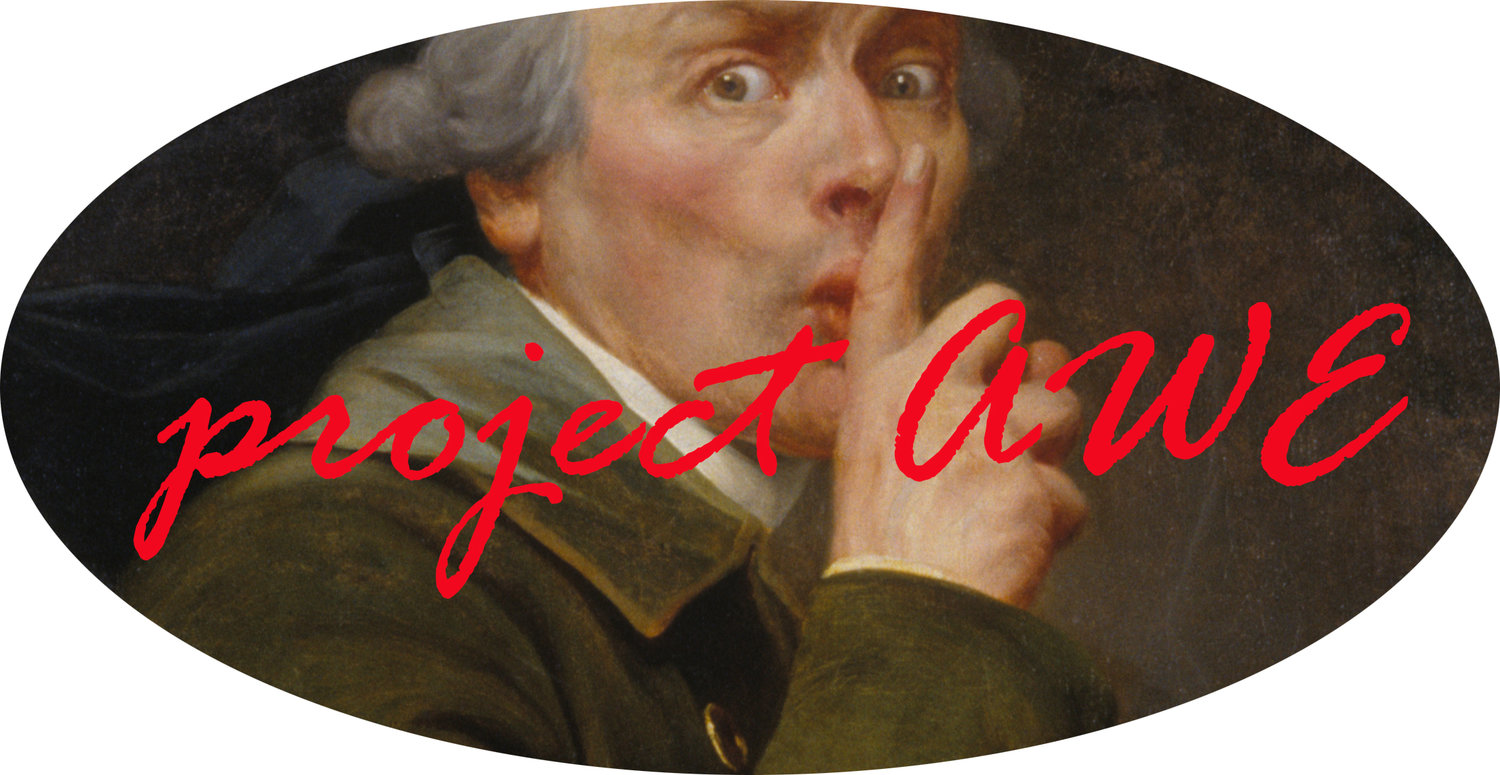
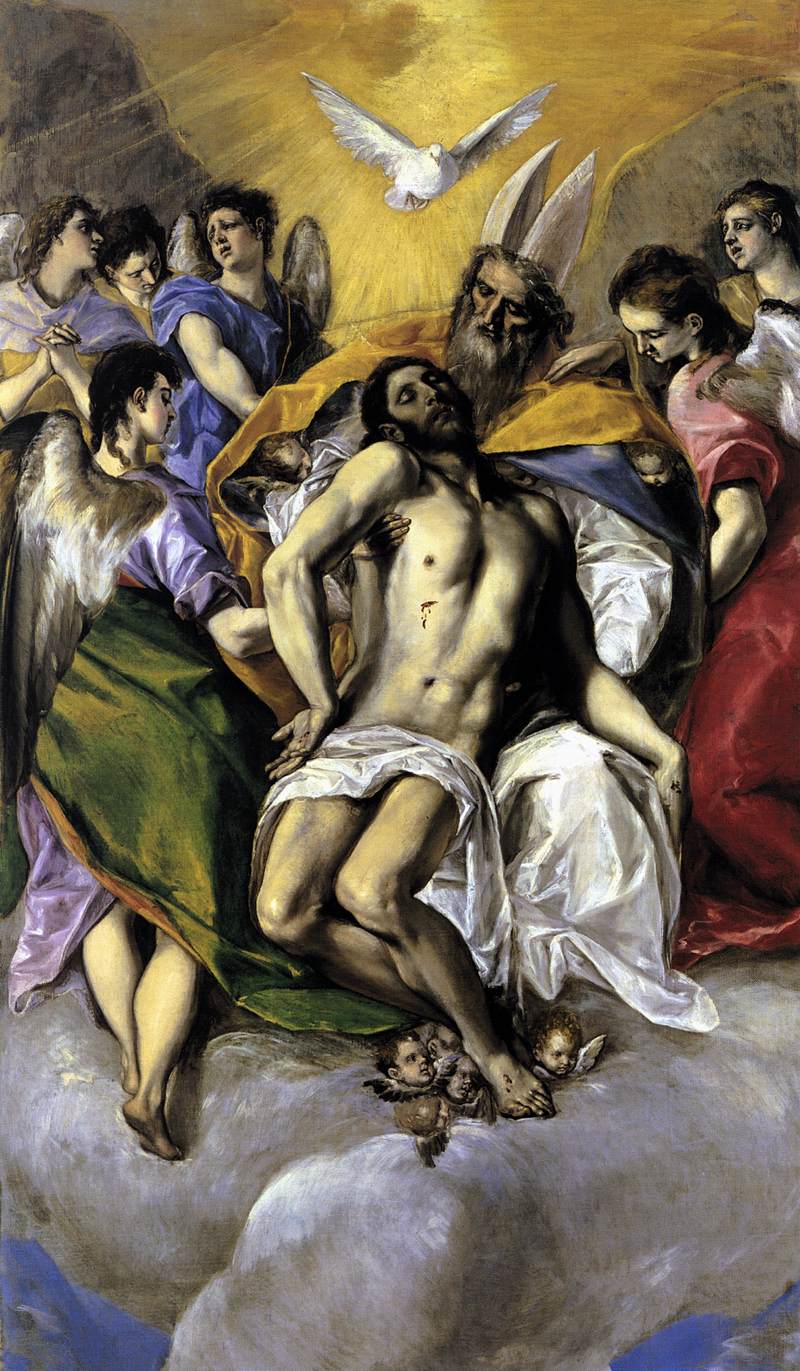
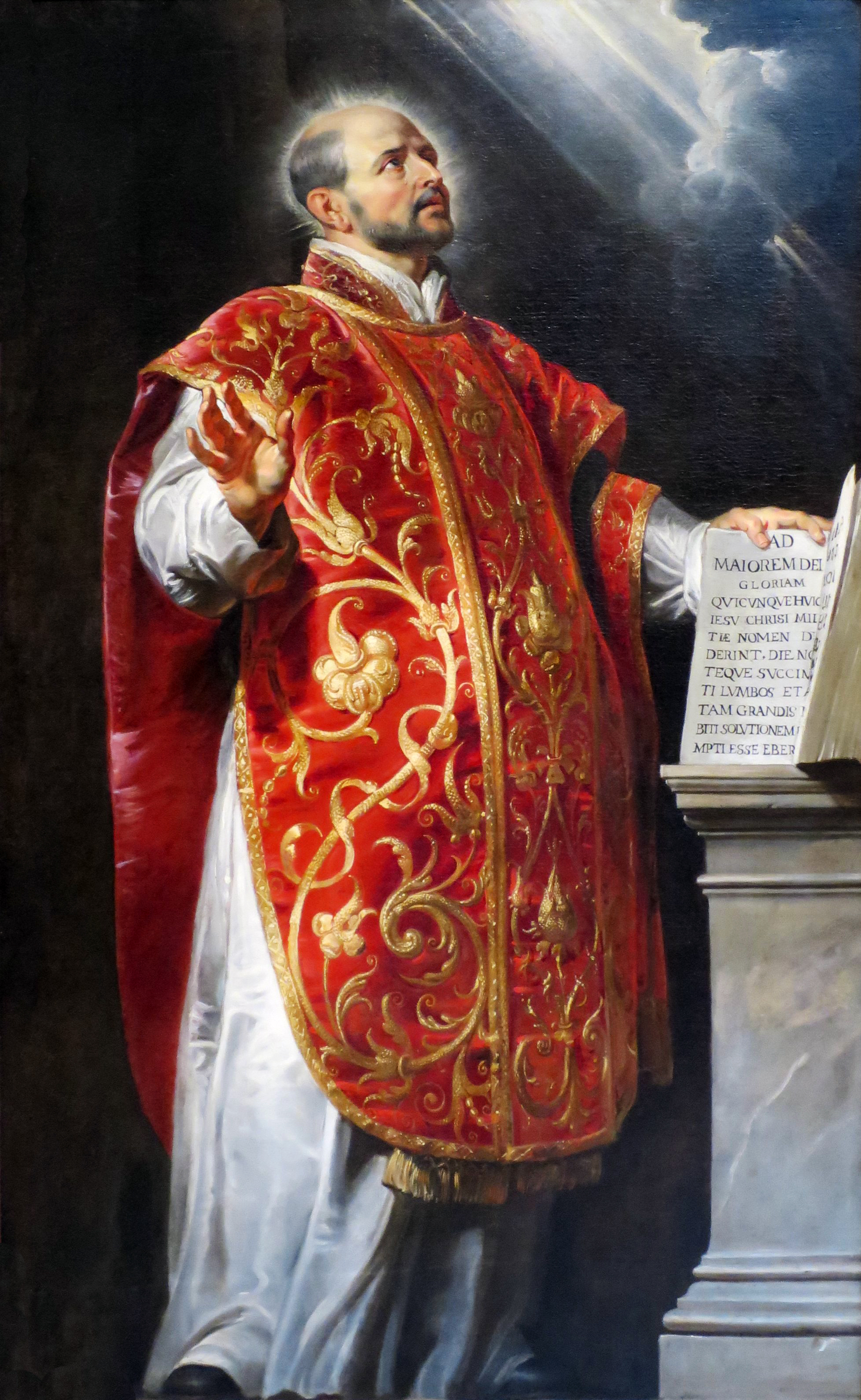
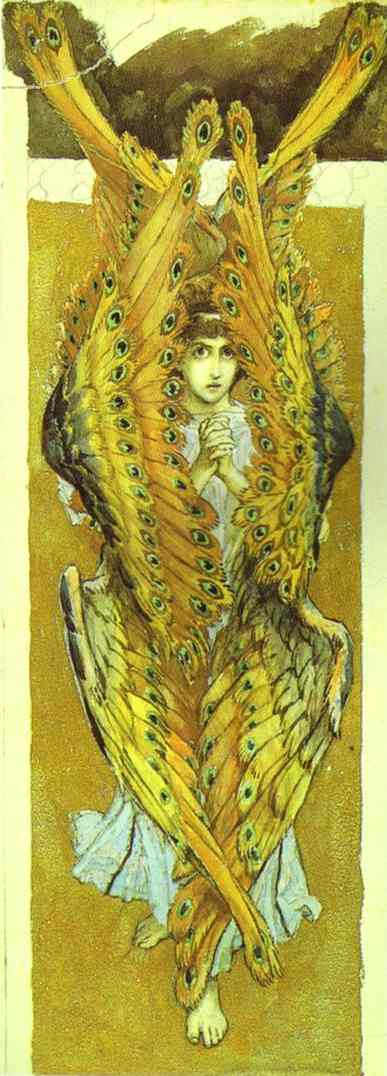

![Here we see the Tetragrammaton [5] in a triangle, adding up to the number 72, considered in esoteric Jewish tradition to numerically represent God [6].](https://images.squarespace-cdn.com/content/v1/533347f0e4b00c5095974ea4/1450757934069-2SEOAJ4ETIW4META6VOE/image-asset.png)

